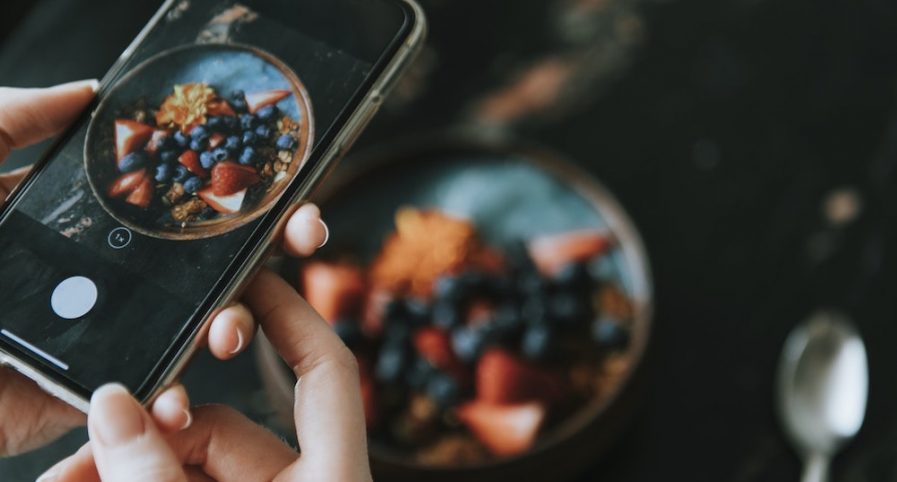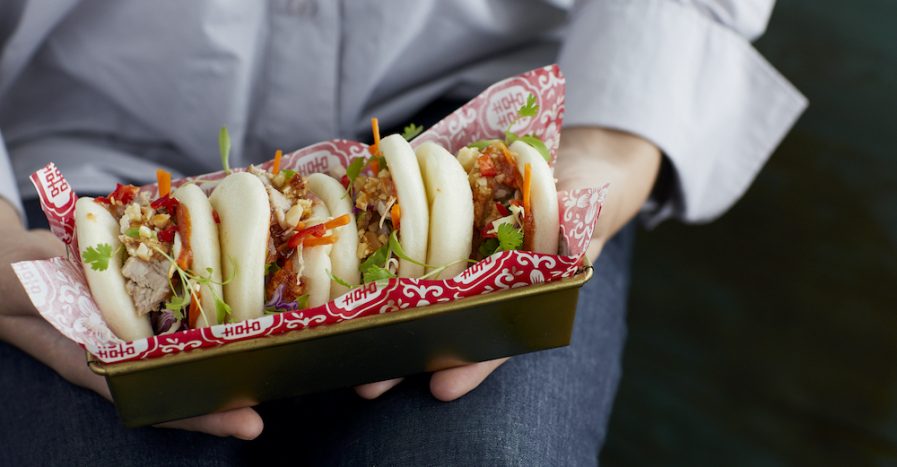
The Australian macadamia industry first investigated global macro trends back in 2017, as we embarked on the start of a new 5-year international marketing strategy. We examined what was driving food and beverage consumption patterns, setting the scene for a series of category-specific consumer insights studies that were conducted over the 3 years that followed.
A lot has happened globally since then, impacting the way consumers see the world and themselves, and in turn affecting what they’re seeking from products and brands.
So we’ve headed back into the world of macro trends to see how the landscape looks now, and it’s been intriguing to see how things have changed. Here we take you through the macro trends of 2020 and what it means for food and beverage producers and brands.
2017: a quick recap
2017 was a year dominated by political upheaval as Donald Trump became the US President, and Brexit negotiations were in full swing. It was a pre-COVID world where awareness of ‘fake news’ was on the rise and the #metoo movement was gaining significant traction.
Our 2017 study identified 5 macro trends:
- Control of health: health was becoming a form of currency
- Here and now: the desire for instant gratification was feeding a growing snacking trend
- No filter: low levels of consumer trust fuelled the call for authenticity and transparency
- Global fusion: the world was becoming borderless, and flavours, foods and heritage were merging
- Memorable food: the potential for food and beverages to deliver excitement and happiness
2020: a year like no other
Tension is the hallmark of 2020 and it will likely go down in history as a time of great uncertainty and anxiety. Here in Australia, the year began with devastating bushfires destroying homes, businesses and lives. Meanwhile thousands gathered for mass protests in Hong Kong, and in China, COVID-19 spread throughout the country in what would eventually become a global pandemic. The death of George Floyd in the US in May sparked an outpouring of grief and mass Black Lives Matter protests demanding justice.
The new macro trends of 2020
Our study identified 5 new macro trends that are currently emerging, set against the tumultuous global backdrop described above.
#1: CHANGING SELF-IDENTITY AND THE APPROACHING ‘SILVER TSUNAMI’
You do you
Self-identity is taking centre stage in 2020, with individuals celebrated for who they are, not who they should be. The goal is now to accept all aspects of yourself – who you are, what you want out of life, who you love and how you look. As consumers become comfortable in their own skin, mantras like ‘I am who I am’ and ‘you do you’ are championing imperfection and idiosyncrasy, as old norms are uprooted and discarded.

The global events of 2020 have seen a polarisation in consumer behaviour, with insular and fearful consumers at one end, and those adopting a ‘YOLO’ (you only live once) attitude at the other.
Global fusion still strong
Global fusion continues to define our identity. This is seeing rise to a food scene that not only blurs the lines and combines the best bits of everything but creates new cuisines altogether, with dishes like kangaroo sushi and taco burgers. Consumers want newness, with new and on-trend foods now a form of social currency, and value placed on discovering foods that nobody else knows about.

Youth fascination versus the silver tsunami
There’s a fascination with younger generations – millennials and Gen Z. They bring youthfulness, coolness and innovation to brands, and their significantly different attitudes and behaviours have older generations dissecting their actions and trying to connect.
Younger generations have big dreams for a better future, but money concerns could dampen this enthusiasm. High housing prices, difficulty finding employment, and technology making some roles redundant will see more young adults staying at home for longer.
However brands and marketers are being put on notice to not to let our obsession with youth blind us to the opportunities that the imminent ‘silver tsunami’ will bring. In coming years, the balance of power will shift towards older consumers who still have money and greater health than previous generations. It’s a massive market that is only getting bigger, with forecasts predicting that by 2050, for the first time in human history, there will be more people over 60 years of age in the world than children. These older consumers:
- Are heavily consumption-driven
- Enjoy quality service
- Appreciate easy-to-use products
- Are very comfortable shopping online

The average 60-year-old in 2030, may well look younger and be fitter than the one today, and the products they’re willing to spend good money on will almost certainly not be the products for the elderly of today.
#2: CLARITY AND TRANSPARENCY
We first saw this emerging in 2017 with the ‘no filter’ trend, and it has continued to gain momentum. Clarity and transparency is essential to build trust, at a time when public scrutiny of government is more intense than ever, and consumer trust in what they see and hear has been eroded. This has created desire for brands to dispense of the white noise in favour of candour, clarity and hyper-transparency, and if necessary, clean house and admit mistakes.
Provenance has come to the forefront as consumers’ fear of hidden ingredients and unprincipled manufacturers sees increased demand to understand where products come from.
On the flipside, the abundance of information and choice can be overwhelming. Consumers want simple instructions, options and labelling that reduce the mental load, with more granular detail available elsewhere if desired.

Transparency now extends to data as well, with high profile privacy breaches making some consumers cautious. Hacking and data breach technology is often one step ahead of legislation and anti-theft technology, leading to data anxiety, particularly among Western consumers. In Asian markets, particularly China where WeChat dominates, technology and the sharing of personal information is more readily accepted.
#3: CONVENIENCE DICHOTOMY
Convenience is still important, but it has taken on a new meaning in 2020. Rather than playing the leading role by being all about ‘faster’ and ‘easier’ it’s now the support act, allowing consumers to take control and employ products that help them achieve small wins.
This trend is driven by the irony of the fact that while technology has connected us all better than ever, we have arguably become disconnected. Frozen meals and home delivery have reduced time spent preparing and cooking food, giving us back more time to spend in other ways. But often we spend this time glued to our phones, connected virtually, but disconnected in reality. We see a growing need for slowness and disconnecting in order to reconnect, and consumers are seeking products that encourage them to slow down and enjoy being in the moment.
Having said that, technology has made immediacy possible and we have become unaccustomed to waiting. This has seen consumers disregarding brands that fail to offer same day delivery, and food that is delivered ‘in 30 minutes or your money back.’ It’s more important than ever for brands to manage consumers’ expectations to avoid disappointment and the backlash it brings.

Technology will continue to make life ‘better’ in ways we can’t yet imagine, however ‘better’ will be a function of both convenience, and making life meaningful.
#4: CONSCIOUS EATING
The rise of the ‘you do you’ phenomenon is seeing consumers rejecting strict eating and excessive exercise in favour of ‘conscious eating’ – balancing what we want with what we need for better health. This sees consumers navigating their own paths between bingeing and dieting, moderation and decadence. Gluttony permissibility and the cheat meal are coming to the fore, as consumers respond to marketing and products that help them to play at either end of the spectrum, or both at once.
Flexitarian, vegan and vegetarian eating are proving more popular than keto, paleo and no sugar diets, and plant-based products are no longer niche.
Awareness of the importance of mental health has risen substantially, and it is increasingly viewed as an integral element of good overall health. Consumers are exploring the impact of what we eat on our mental wellbeing, fuelling the rise of nootropics (substances that may improve cognitive function), adaptogens (a select group of herbs that support the body’s natural ability to deal with stress) and feel good foods as a way to fortify our mental health naturally.

Snacks are fast becoming the new meal, increasing the importance of smaller portions and product formats that can be easily consumed on the go, without compromising on satiety, taste or sustenance.
#5: TURNING UP THE HEAT
Consumers are turning up the heat on companies, demanding sustainable practices and environmental action. 2019 saw millions of people taking to the streets demanding urgent action on climate change. Yet with governments hesitant to act and slow to legislate, consumers are demanding brands lead the charge, demanding products that reduce their ‘eco-anxiety’.
The war on waste has intensified, and there’s greater resistance to plastic. Australia’s leading supermarkets banned single-use plastic bags around two years ago, and China has announced a ban on single-use plastics that will broadly forbid their use by 2025.
Yet sustainability remains a fragmented space that means different things to everyone – from waste, renewable energy, zero emission and ethical production, to reusable eco-friendly materials, air pollution, water conservation, and land preservation.
There’s a desire to support local businesses and communities, and this is particularly true in Australia where drought, bushfires and COVID-19 have served up difficult times for small businesses and rural communities. This pain has triggered a desire to help our own – supporting smaller players over big business, and buying local.
An urge to reconnect with nature has seen growth in appeal for ‘back to basics’ products and ingredients, and heightened desirability of raw and rarefied ingredients. COVID-19 has deepened this yearning further, and has seen people growing their own vegetables, baking their own bread and appreciating the positive impact of reduced pollution on the environment and their future.

Want to know more?
To discuss further or to find out how macadamias could play a role in helping your next product cater to any of these macro trends, please contact Market Development Manager Jacqui Price
The insights in this article are from macro trends research carried out by research agency FiftyFive5 for Australian Macadamias in June 2020.


